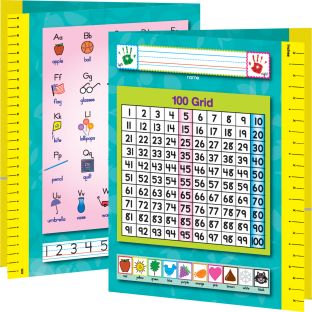Curriculum Support – Kindergarten
Popular Kindergarten Curriculum Support Materials
Inspire engagement with popular Kindergarten Curriculum Support Materials. Our most-purchased Kindergarten Curriculum Support Materials are versatile and appropriate in most school environments.
Really Good Stuff’s top Kindergarten Curriculum Support Materials enhance experiences for students as well as teachers. Shop our most popular Curriculum Support Materials for educators.
Kindergarten Curriculum Support Products
Top-Rated Kindergarten Curriculum Support Materials | 2025 School Year
Get top-rated Kindergarten Curriculum Support Materials from Really Good Stuff. Teachers rate these 15 Curriculum Support Materials with an average of 4.8 stars, making them the best Curriculum Support Materials.
Explore these Kindergarten Curriculum Support Materials loved by students aged 4 to 7 years-old. Through premium Kindergarten supplies, Curriculum Support Materials can help your PreK grade to 8th grade class.
Learn More About Kindergarten Curriculum Support Materials
Enhance your Kindergarten classroom with Really Good Stuff’s Curriculum Support Materials. Our catalog of 23 high-quality Curriculum Support Materials start at $7.99 and fit the Kindergarten classroom. From premium brands like Really Good Stuff® and Toobalos®, these Curriculum Support Materials meet the needs of Kindergarten teachers.
Really Good Stuff’s Curriculum Support Materials for Kindergarten students work for 5 years old in Kindergarten. Teachers match Kindergarten Curriculum Support Materials with other Curriculum Support Materials from the Student Support category.
Make Really Good Stuff your top choice when looking for Curriculum Support Materials for your Kindergarten classroom.
In the dynamic and formative environment of a Kindergarten classroom, Curriculum Support products play a pivotal role in ensuring that early learners receive the best educational experience possible. Teachers often use these resources to complement and reinforce their lesson plans, providing hands-on activities, visual aids, and engaging materials that make learning both fun and effective. For example, interactive games and manipulatives can help solidify foundational concepts in math and literacy, while storybooks and thematic units can enhance social and emotional learning. Utilizing these resources not only keeps students engaged but also caters to various learning styles, ensuring that each child can grasp core concepts in a way that resonates with them.
When selecting Curriculum Support products for your Kindergarten classroom, there are several tips to keep in mind to ensure you make the most beneficial choices for both teaching and learning. Firstly, consider the learning objectives and curriculum standards that the products will need to meet. This will help ensure that the resources you choose are not only educational but also relevant and aligned with what you are teaching. Secondly, look for versatile products that can be adapted for use in different subjects or at various times throughout the year. Flexibility in materials can save on costs and storage space. Thirdly, think about the engagement factor; products that are colorful, interactive, and age-appropriate can make a significant difference in maintaining students’ attention and excitement about learning.
Kindergarten classrooms typically cater to children aged 4 to 6, encompassing the transitional phase from preschool to more structured learning environments. This age range benefits greatly from Curriculum Support products that are designed to be safe, durable, and appealing to young learners. When purchasing these resources for Kindergarten, it’s crucial to consider the developmental stage of the children. Unlike older students, Kindergarteners thrive on tactile and visual stimulation, so look for items that are sturdy and can withstand frequent handling and play. Additionally, ensuring that these products are easy to clean and store can help maintain an organized and hygienic classroom.
In contrast to other school levels, Kindergarten requires resources that are specifically geared toward early childhood education. Products need to be both educational and playful to foster a love for learning while building essential skills. By keeping these unique needs in mind, educators and parents can create a nurturing and effective learning environment that will serve as a solid foundation for children’s future education.
FAQs for Kindergarten Curriculum Support Materials
What are the highest rated Kindergarten Curriculum Support Materials?
- Resource Folder – Zaner Bloser – Primary – 12 folders (5 stars) – $23.99
- Really Good Stuff® Word Twists™ – Set of 10 (5 stars) – $42.99
- Read And Build Sight Word Sentences – 25 cards, 100 tiles (5 stars) – $36.74
What Kindergarten Curriculum Support Materials do teachers use most?
- Learning Success: Grade K – Reading, Math, and SEL (5 stars) – $29.99
- EZread™ Magnetic Word Building Kit – 1 tray, 52 letters (4 stars) – $29.99
- Slide and Learn™ Number Lines – Set of 12 (4.6 stars) – $19.99
Can you recommend some budget-friendly Kindergarten Curriculum Support Materials?
- Resource Folder – Zaner Bloser – Primary – 12 folders (5 stars) – $23.99
- Really Good Stuff® Word Twists™ – Set of 10 (5 stars) – $42.99
- Read And Build Sight Word Sentences – 25 cards, 100 tiles (5 stars) – $36.74






















